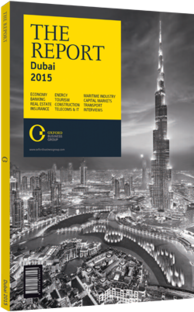Peter Baltussen, CEO, Commercial Bank of Dubai: Interview

Interview: Peter Baltussen
How could external and internal risk factors affect Dubai's lending performance in 2014-15?
PETER BALTUSSEN: Although yearly loan growth appears to be registering at about 10% – which is quite high as compared to the previous five years – we believe it is manageable from a capital and liquidity perspective. All banks have now prepaid the Ministry of Finance tier 2 capital notes, and are focused on continuing to build up reserves. The Central Bank of the UAE has been engaged in regular discussion with local banks, particularly on the topic of the Basel III liquidity guidelines.
As with most of the GCC region, it does not seem that UAE banks will have any difficulty complying with liquidity coverage ratios. However, the key remaining issue is the duration mismatch – medium-term funding versus medium- and long-term lending. This is why the regulator has extended the compliance deadline to 2018. Moreover, the Basel III guidelines will give banks an extra push to issue more medium-term debt. In terms of equity, the Dubai banking system is in a very comfortable position with average capital adequacy ratios sitting at 18-19% across the sector, and this is mainly comprised of core capital rather than the hybrid structures that you might find in other banking systems.
Under what circumstances might a broader portfolio of domestic companies participate in the continued development of the local debt market?
BALTUSSEN: Overall the local debt market has been quite strong of late, with government-related entities and larger companies taking advantage of very low rates and favouring the bond market over lending, as banks are not willing to match the rates and tenures. Furthermore, we have seen significant investor appetite, particularly as Dubai's credit default swaps have come down over the past few years. Of course the number one issue remains that the bond market sees very little participation from anyone but large-cap companies. On the regulatory front, the authorities recently reduced the minimum allowable size of bond issues to Dh10m ($2.72m), which might be nicer in theory than in practice, as it is well known how expensive it is to issue bonds. Before even taking funding costs into account, the legal costs and issuing fees could amount to almost 5% of a Dh10m ($2.62m) issuance.
What do you see as the main determinants for further reducing non-performing loan (NPL) ratios?
BALTUSSEN: Both NPL and loss ratios are expected to improve due to lower loan loss provisions amongst most banks, although there are still a few banks that are increasing their provisioning. NPL ratios are of course also benefitting from growing loan portfolios. Overall, we see them being reduced to acceptable levels over the next three years. We expect top-line growth to be relatively strong in the coming year; however, margin compression will certainly continue, particularly amongst larger corporates. Yields on lending are coming back to pre-crisis levels, which means the risk premiums are coming out of the pricing, which is positive. However, we do expect market rates to rise in the coming years, and therefore must be ready to adapt.
What challenges does the local banking sector face in complying with loan concentration directives?
BALTUSSEN: To a large extent, loan concentration is an issue that the central bank is addressing on an individual basis from bank to bank, allowing three to five years for compliance. Some banks are expected to have a harder time meeting the requirements than others, and this might affect support for certain government projects, but ultimately it will keep the system stable and safe. Given that real estate financing comprises around 15% of the bank’s loan portfolios, the financial system needs to be careful with off-plan developments, particularly with firms that lack a track record. If we begin to see a disproportionate rise in the amount of off-plan sales, the market could grow cautious. Regulators have tightened mortgage regulations and banks are unable to finance more than 50% of off-plan developments.
You have reached the limit of premium articles you can view for free.
Choose from the options below to purchase print or digital editions of our Reports. You can also purchase a website subscription giving you unlimited access to all of our Reports online for 12 months.
If you have already purchased this Report or have a website subscription, please login to continue.

